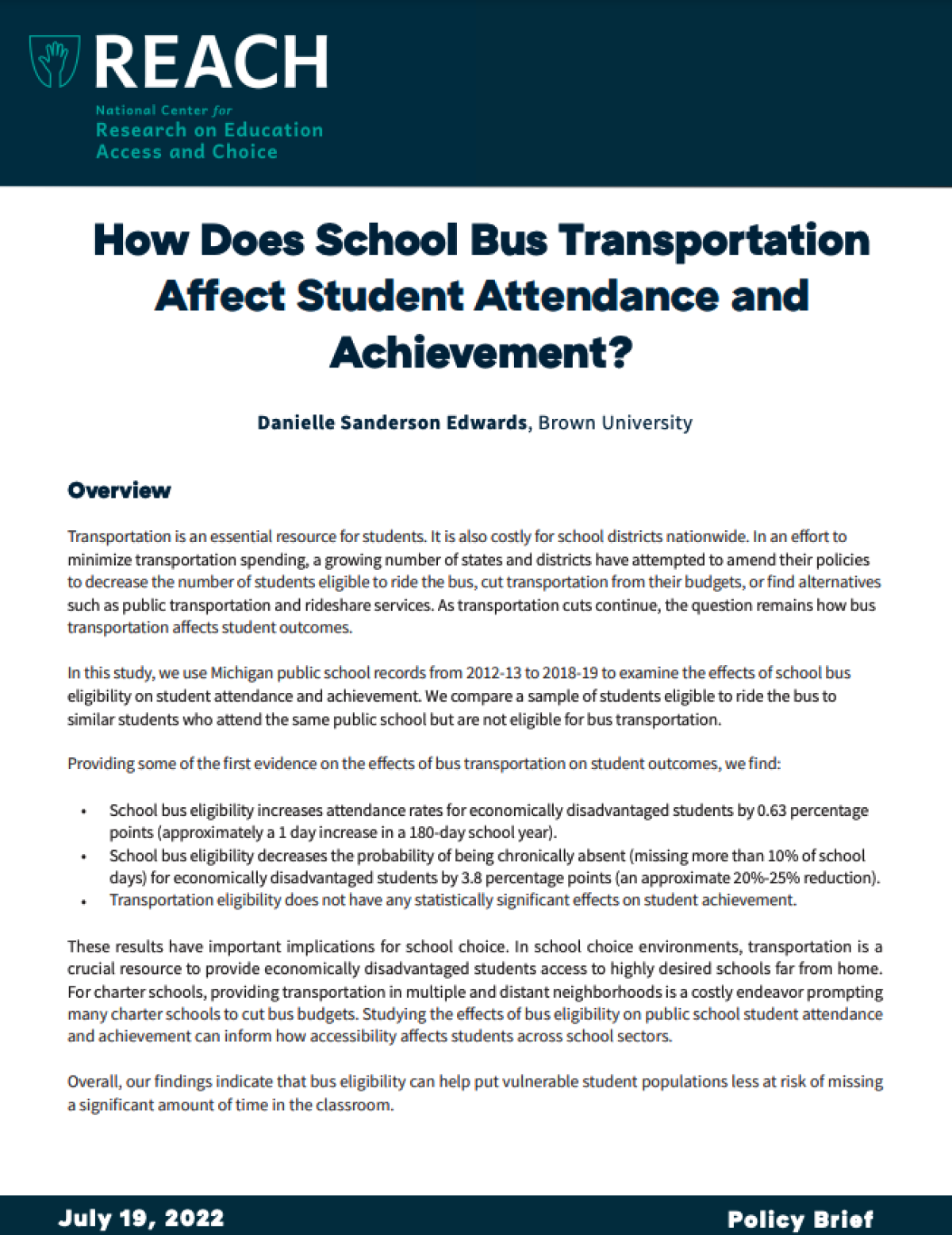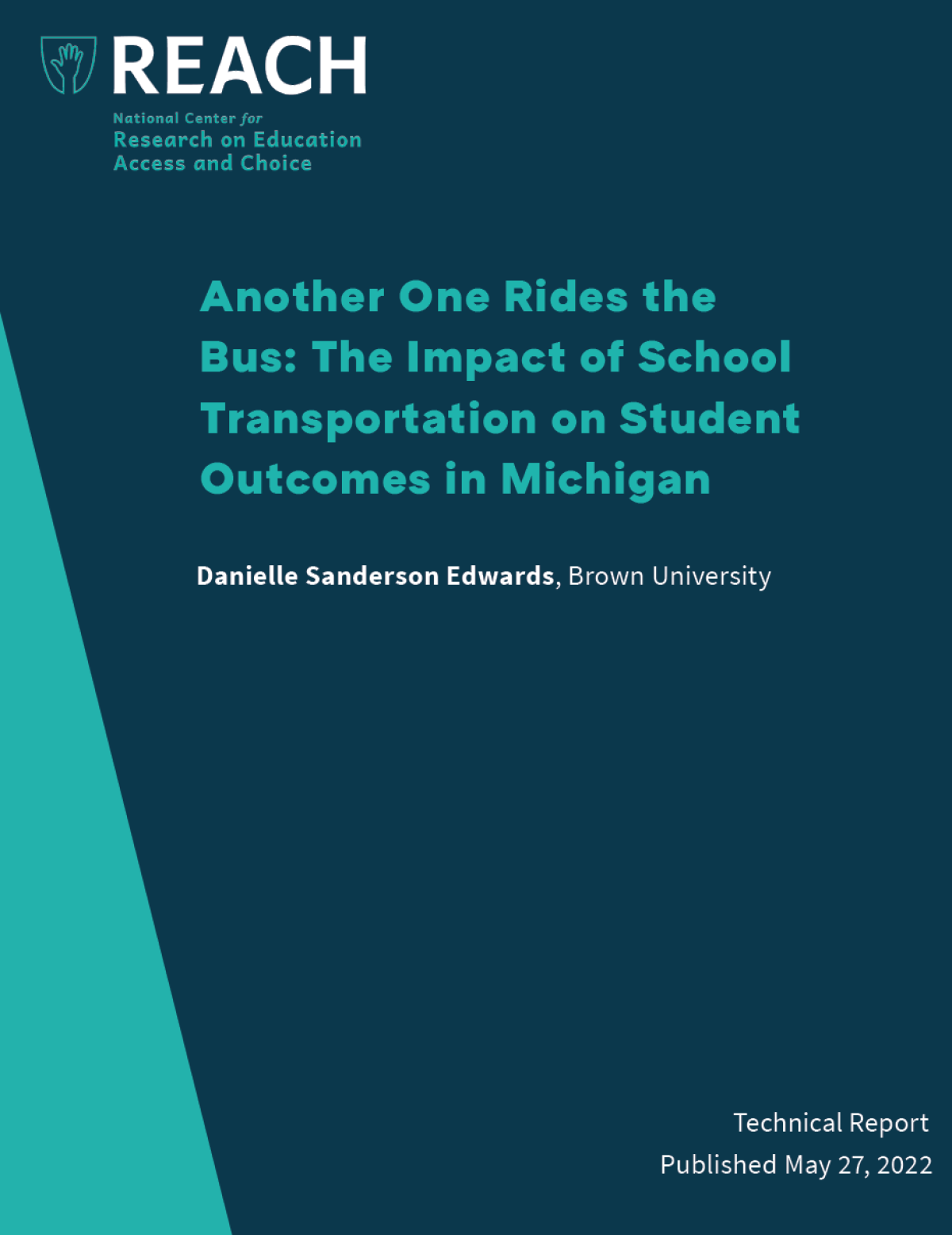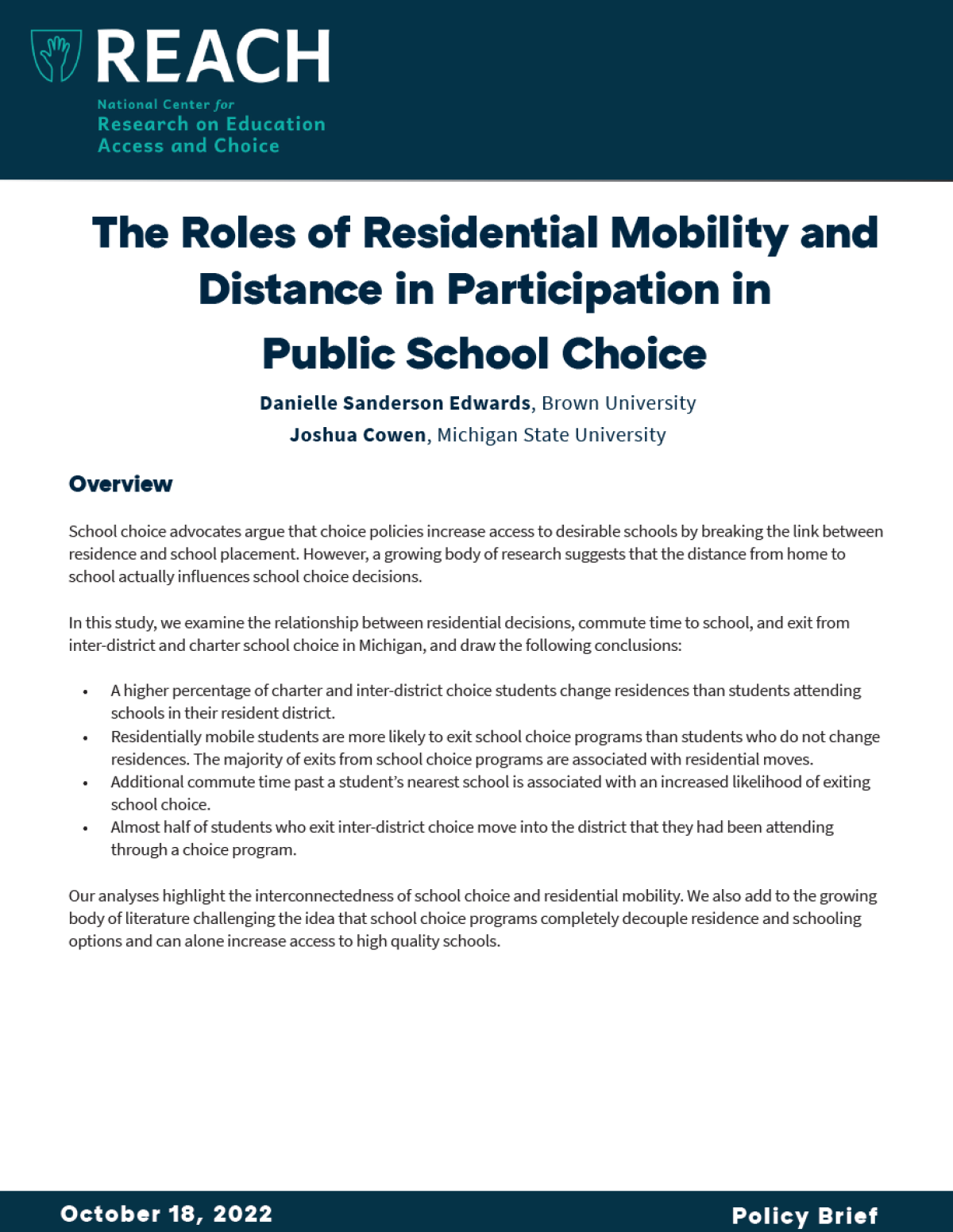Transportation is an essential resource for students. It is also costly for school districts nationwide. In an effort to minimize transportation spending, a growing number of states and districts have attempted to amend their policies to decrease the number of students eligible to ride the bus, cut transportation from their budgets, or find alternatives such as public transportation and rideshare services. As transportation cuts continue, the question remains how bus transportation affects student outcomes.
In this study, we use Michigan public school records from 2012-13 to 2018-19 to examine the effects of school bus eligibility on student attendance and achievement. We compare a sample of students eligible to ride the bus to similar students who attend the same public school but are not eligible for bus transportation.
Providing some of the first evidence on the effects of bus transportation on student outcomes, we find:
- School bus eligibility increases attendance rates for economically disadvantaged students by 0.63 percentage points (approximately a 1 day increase in a 180-day school year).
- School bus eligibility decreases the probability of being chronically absent (missing more than 10% of school days) for economically disadvantaged students by 3.8 percentage points (an approximate 20%-25% reduction).
- Transportation eligibility does not have any statistically significant effects on student achievement.
These results have important implications for school choice. In school choice environments, transportation is a crucial resource to provide economically disadvantaged students access to highly desired schools far from home.
For charter schools, providing transportation in multiple and distant neighborhoods is a costly endeavor prompting many charter schools to cut bus budgets. Studying the effects of bus eligibility on public school student attendance and achievement can inform how accessibility affects students across school sectors.
Overall, our findings indicate that bus eligibility can help put vulnerable student populations less at risk of missing a significant amount of time in the classroom.



